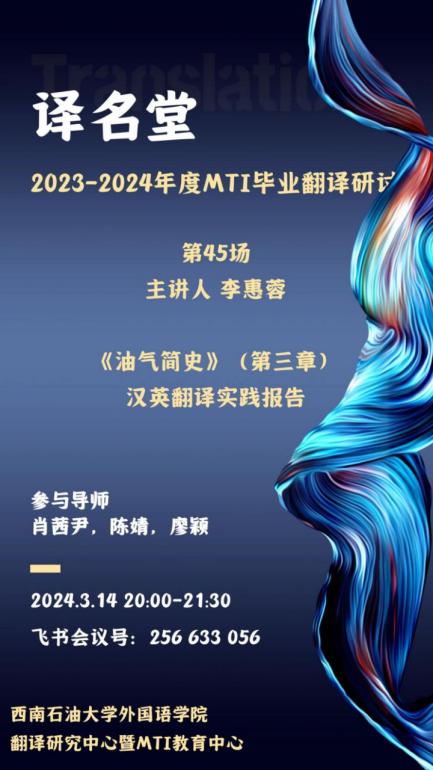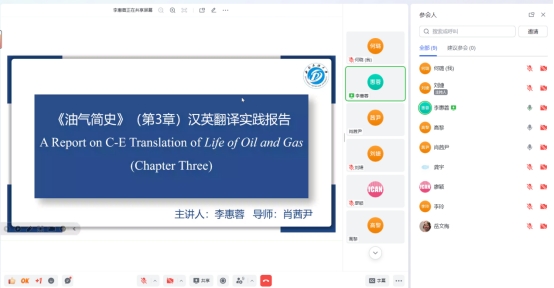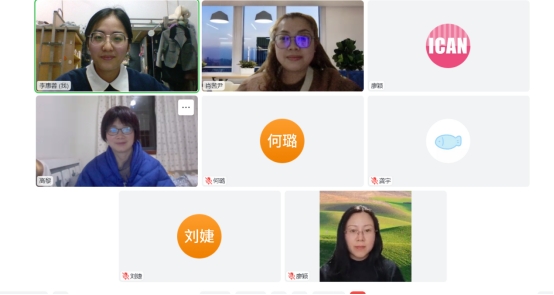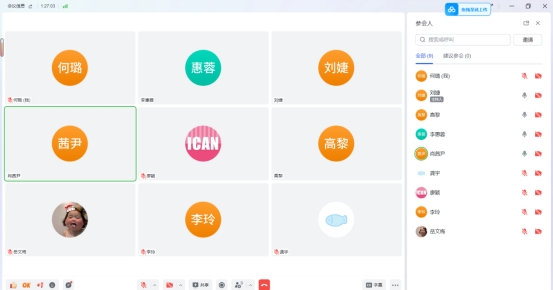
内容简介:本次翻译实践材料选自张烈辉教授所著《油气简史》,该书为一部石油石化科普著作,将石油天然气行业所涵盖的油气科技知识,以通俗易懂、富有趣味的文字呈现给读者。该书从油气的产生、运移、油气的勘探和开采再到储存运输,全方位介绍了油气及油气工业相关知识。译者选取该书第三章所有内容为翻译材料,主要涵盖石油开采过程中相关钻井知识以及钻井工程中涉及的安全问题,共计16051字。
从文本类型来看,源文本为信息型文本,以传递信息为主要目的。其次,从文体特点来看,源文本属于普通科技文体,集专业性和文学性为一体。有着科技文体所包含的专业词汇、各种长难句,同时也有科普文体所特有的生动语言、丰富的比喻。为了使译入语读者能够获得原文读者有一致的反应,并且在翻译时确保意义准确传达的同时尽可能在一定程度上再现源文本风格,译者选取了尤金·奈达(Eugene Nida)的功能对等理论(Functional Equivalence Theory)对本次翻译实践进行指导。
译文修改:
例1:
ST:油气藏深埋地下几百米、几千米甚至上万米,上面还严严实实地覆盖了—层又一层的岩层,地质家们发现和找到地下油气藏之后,接下来的任务就是想尽各种办法,在地下与地面之间建立一个有效的通道,把油气藏中的“油气”宝贝弄到地面来,让她们“飞”进千家万户。
TT1:Oil and gas reservoirs are buried hundreds, thousands or even tens of thousands of meters deep underground, andare tightly covered withlayers of rock. Once geologists have discovered and located these reservoirs, the next challenge for drillers is to make every effort to build an effective channel connecting the subsurface to the surface. The goal is to bring the“treasures” of oil and gasfrom the reservoirs to the surface of the ground, so that they canbe distributed forwidespread use.
TT2:Oil and gas reservoirs are buried hundreds, thousands or even tens of thousands of meters deep underground, andare blanketed bylayers of rock. Once geologists have discovered and located these reservoirs, the next task for drillers is to make every effort to build an effective channel connecting the subsurface and the surface, bringing the“oil and gas” treasuresin the reservoirs to the surface of the ground, so that they can“fly”(be transported)into numerous households.
例2:
ST:大家都知道,钻井的对象是地下的岩石,不像打水井,也就十几米,而油气钻井从地面钻起,要深达地下几百米、几千米甚至上万米,整个钻井过程是一个“黑匣子”工程。地下情况复杂、特殊,地层千差万别,例如地下地层压力不同,有低压层,有异常高压层;有的岩石很坚硬,有的很松软;有的岩石很致密,有的存在裂缝、溶洞,甚至是大裂缝大溶洞;有的地层可能还含CO2,和有毒气体如H2S等。
TT1:As we all know, the object of drilling is underground rocks. Unlike drilling water wells, which are only ten meters deep, oil and gas drilling starts from the surface of the ground and goes as deep as hundreds, thousands or even tens of thousands of meters underground.The whole drilling process is like a “black box” project, with unseen complex and special underground conditions and different formations.For example, there are differences in underground pressures, ranging from low-pressure formations to abnormally high-pressure formations. Some rocks are very hard, while others are soft. Some rocks are dense, while others contain cracks, karst caves, and even larger ones. Additionally, some formations may contain CO2or toxic gases such as H2S.
TT2:As we all know, the object of drilling is underground rocks. Unlike drilling water wells, which are only ten meters deep, oil and gas drilling starts from the surface of the ground and goes as deep as hundreds, thousands or even tens of thousands of meters underground.The whole drilling process is like a “black box” project due to the unseen complex and special underground conditions and different formations.For example, there are differences in underground pressures, ranging from low-pressure formations to abnormally high-pressure formations. Some rocks are very hard, while others are soft. Some rocks are dense, while others contain cracks, karst caves, and even larger ones. Additionally, some formations may contain CO2or toxic gases such as H2S.
例3:
ST:①在实际钻井过程中,钻井工程师在钻头后面安装上一个仪器(称之为随钻测井仪),②这相当于钻头长了“千里眼”,③有了它,在前进的过程中就可以看到地下几千米甚至十几千米钻头所到之处井眼周围的情况,④包括是什么样的岩石、地层流体的组分和压力、井眼最终目标、途经的地层岩性、分层界面、可能出现的工程复杂情况等,⑤用于指导施工作业,避免在漆黑的夜晚“摔跟头”,⑥这就是通常所说的测井技术。打个比方,与外科医生在做微创手术时的内窥镜相似。
TT1: ①In the actual drilling process, the drilling engineer installs an instrument on the drill bit (called Logging While Drilling tool). ②This is akin to giving the drill bit a“clairvoyance”. ③With it, engineers can observe conditions surrounding the borehole as the drill advances thousands or even tens of thousands of meters underground. ④This includes identifying the types of rocks, the composition and pressure of formation fluids, the ultimate target of the well, the lithology of the traversed formations, stratigraphic interfaces, and potential engineering complexities. ⑤These observations guide construction operations, helping to preventmishaps during the dark of night(fails during drilling). ⑥This is commonly known as logging, and the added instrument on the drill bit is similar to the endoscope used by surgeons during microfracture surgery.
TT2: ①In the drilling process, a device, called Logging While Drilling(LWD) tool is installed on the drill bit by drilling engineers. ②This is akin to giving the drill bit a “Thousand-mile Eye”1. ③With this tool, engineers can see the surrounding conditions of the wellbore several kilometers or even tens of kilometers underground. ④This includes identifying the types of rocks, the composition and pressure of formation fluids, the ultimate target of the well, the lithology of the traversed formations, stratigraphic interfaces, and potential complexities. ⑤These data can guide the drilling operation, preventing“stumbles” in the pitch-black night (accidents during drilling). ⑥This is commonly known as logging, and the logging tool is similar to the endoscope used by surgeons during keyhole surgery.
1 Thousand-mile Eye:One of the immortals in Chinese mythology and folk religious beliefs, often appearing alongside Windaccompanying Ear. In the classic tale,Journey to the West, the Thousand-Mile Eye is a supernatural ability possessed by the character Sun Wukong, also known as the Monkey King. It allows him to see things from great distances, even up to a thousand miles away. This term has been figuratively extended to describe someone with keen observation or insight.
研讨反思:本次研讨会译者总共与老师们一起探讨了共14个例子,在这里译者选取了其中最具代表性的三个例子作为展示,并阐述本次研讨会的收获。
第一个例子是对油气勘探到开发的大致概括,原文作者采用一系列修辞手法将这一过程生动的展示给了大家。“严严实实地覆盖”运用叠词显示出油气深埋地下,TT1和TT2两个版本都表达出了原文的意思,但在和老师们讨论过后,决定采用TT2的版本,因为“are blanketed by”更具形象感,使得描述更加生动,并引起读者对岩层覆盖油气储层这一情景的联想。其次是,“‘油气’宝贝”,在TT1中译者将双引号给到了“treasure”,在讨论过程中老师们指出不能改变作者想要强调的对象,所以译者将其修改为“‘oil and gas’treasures”。最后是对“飞”这一个字的调整。译者在TT1中将其具象化以将其如何为千家万户所利用,在讨论过后选择保留原文的形式,但为了避免造成误解采用加注来进行解释,如TT2所示。
第二个例子主要是针对加粗句子的逻辑问题。译者对前后两个句子之间的关系的理解有一定偏差,在首次翻译是译者将其理解为伴随关系,但经过讨论以及查阅一些平行文本后发现两者实则为因果关系,因此在老师的建议下译者使用“due to”这一短语将前后两个句子连接起来并将其逻辑关系表现出来。
最后一个例子,作者将录井时要用到的随钻测井仪比作“千里眼”,译者在第一次翻译时将“千里眼”译成“clairvoyance”,在查阅剑桥词典后,发现这两者在意义上有一定区别。“千里眼”是中国神话及民间宗教信仰中的神仙之一,常与顺风耳一同出现。它常常用来说明一个人眼睛能看清千里之外的东西,形容目光敏锐,看得极远。而“clairvoyance”的英语释义为“a person who says they have powers to see the future or see things that other people cannot see”,显然跟作者想要表达的意思不太一致。所以再商讨后,译者借鉴了《西游记》英译版中对“千里眼”翻译,并采用脚注的方式对该词的来源和文化含义进行解释,这样既保留了原作的风格保留一定的文本特点,同时还能传播中国文化。“摔跟头”一词也决定采用加注的方式,保留原文语言风格的同时做出解释,让读者能更好的理解。
照片:


